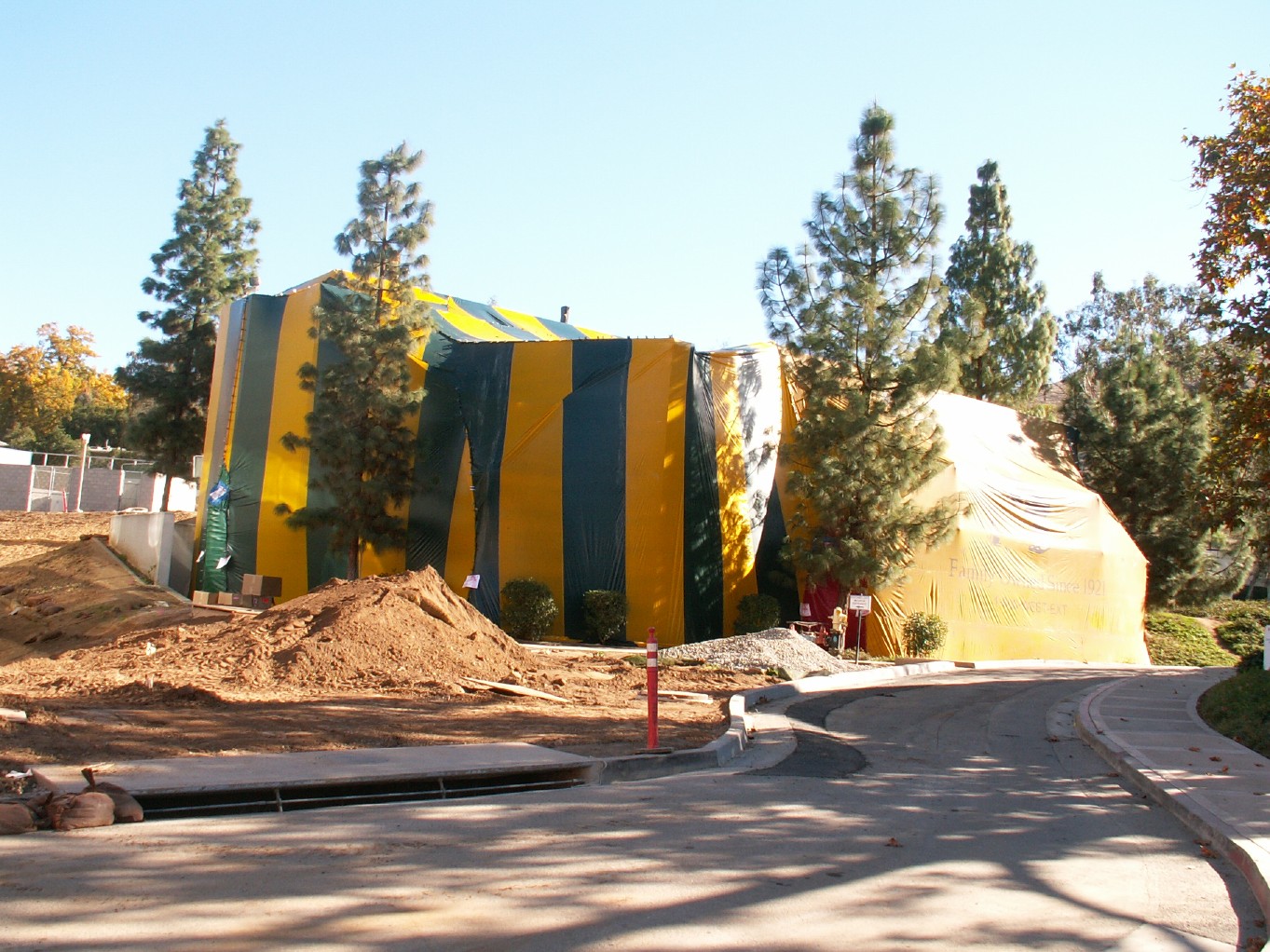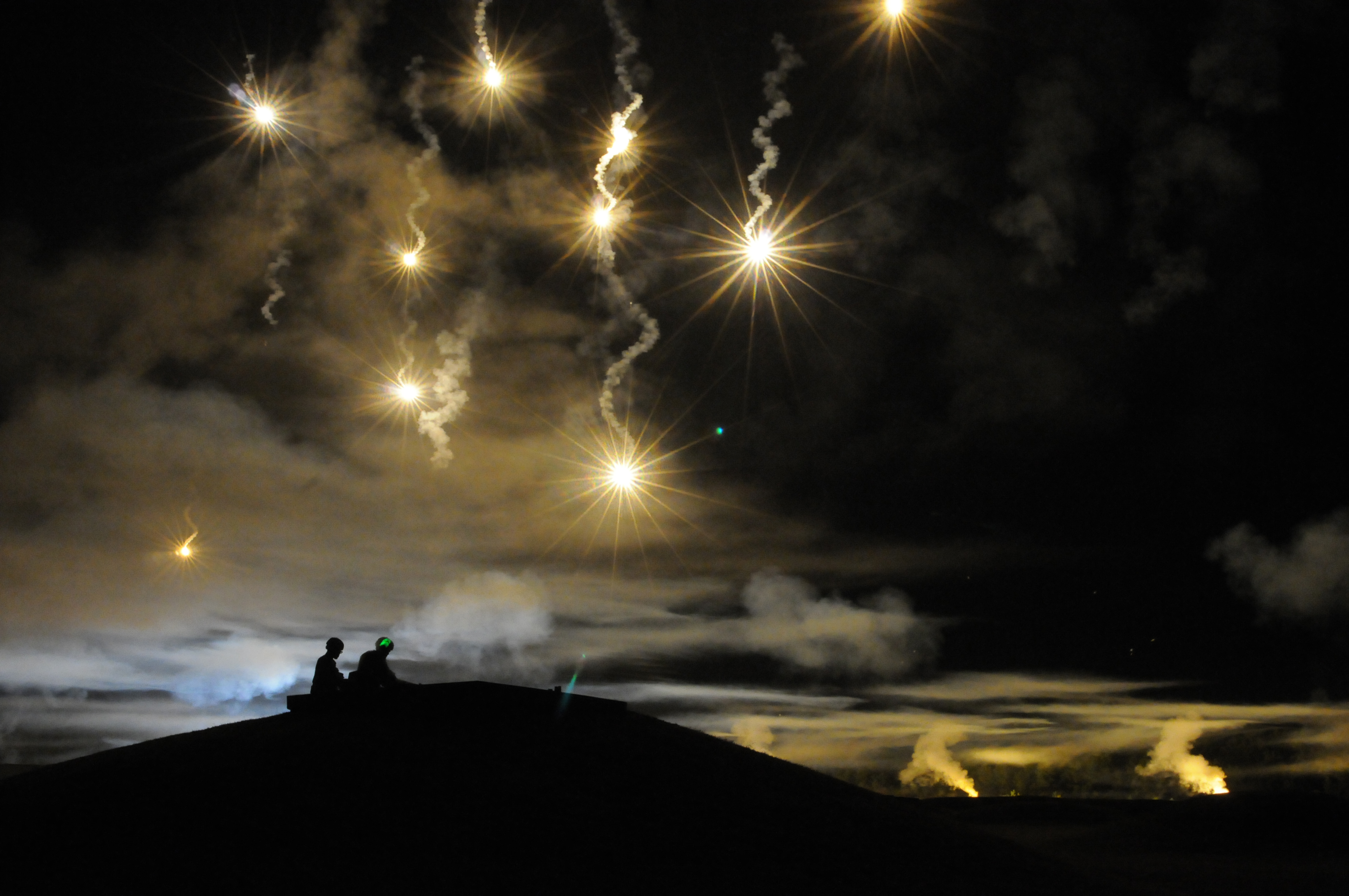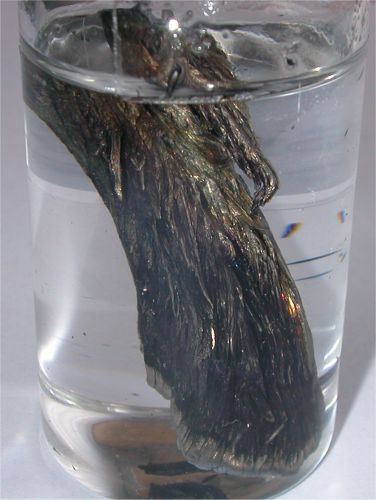|
Strontium Nitrate
Strontium nitrate is an inorganic compound composed of the elements strontium, nitrogen and oxygen with the formula Sr( NO3)2. This colorless solid is used as a red colorant and oxidizer in pyrotechnics. Preparation Strontium nitrate is typically generated by the reaction of nitric acid on strontium carbonate. : 2 HNO3 + SrCO3 → Sr(NO3)2 + H2O + CO2 Uses Like many other strontium salts, strontium nitrate is used to produce a rich red flame in fireworks and road flares. The oxidizing properties of this salt are advantageous in such applications.MacMillan, J. Paul; Park, Jai Won; Gerstenberg, Rolf; Wagner, Heinz; Köhler, Karl and Wallbrecht, Peter (2002) "Strontium and Strontium Compounds" in ''Ullmann's Encyclopedia of Industrial Chemistry'', Wiley-VCH, Weinheim. Strontium nitrate can aid in eliminating and lessening skin irritations. When mixed with glycolic acid, strontium nitrate reduces the sensation of skin irritation significantly better than using glycolic ... [...More Info...] [...Related Items...] OR: [Wikipedia] [Google] [Baidu] |
Ammonia
Ammonia is an inorganic chemical compound of nitrogen and hydrogen with the chemical formula, formula . A Binary compounds of hydrogen, stable binary hydride and the simplest pnictogen hydride, ammonia is a colourless gas with a distinctive pungent smell. It is widely used in fertilizers, refrigerants, explosives, cleaning agents, and is a precursor for numeous chemicals. Biologically, it is a common nitrogenous waste, and it contributes significantly to the nutritional needs of terrestrial organisms by serving as a precursor to fertilisers. Around 70% of ammonia produced industrially is used to make fertilisers in various forms and composition, such as urea and diammonium phosphate. Ammonia in pure form is also applied directly into the soil. Ammonia, either directly or indirectly, is also a building block for the synthesis of many chemicals. In many countries, it is classified as an List of extremely hazardous substances, extremely hazardous substance. Ammonia is toxic, cau ... [...More Info...] [...Related Items...] OR: [Wikipedia] [Google] [Baidu] |
Pyrotechnics
Pyrotechnics is the science and craft of creating fireworks, but also includes safety matches, oxygen candles, Pyrotechnic fastener, explosive bolts (and other fasteners), parts of automotive airbags, as well as gas-pressure blasting in mining, quarrying, and demolition. This trade relies upon self-contained and self-sustained exothermic chemical reactions to make heat, light, gas, smoke and/or sound. The name etymology, comes from the Greek words ''pyr'' (πυρ; 'fire') and ''technikós'' (τεχνικός; 'artistic'). Improper use of pyrotechnics could lead to List of pyrotechnic incidents, pyrotechnic accidents. People responsible for the safe storage, handling, and functioning of pyrotechnic devices are known as pyrotechnicians. Proximate pyrotechnics Explosions, flashes, smoke, flames, fireworks and other pyrotechnic-driven effects used in the entertainment industry are referred to as proximate pyrotechnics. Proximate refers to the pyrotechnic device's location relative to ... [...More Info...] [...Related Items...] OR: [Wikipedia] [Google] [Baidu] |
Nitrates
Nitrate is a polyatomic ion with the chemical formula . Salts containing this ion are called nitrates. Nitrates are common components of fertilizers and explosives. Almost all inorganic nitrates are soluble in water. An example of an insoluble nitrate is bismuth oxynitrate. Chemical structure The nitrate anion is the conjugate base of nitric acid, consisting of one central nitrogen atom surrounded by three identically bonded oxygen atoms in a trigonal planar arrangement. The nitrate ion carries a formal charge of −1. This charge results from a combination formal charge in which each of the three oxygens carries a − charge, whereas the nitrogen carries a +1 charge, all these adding up to formal charge of the polyatomic nitrate ion. This arrangement is commonly used as an example of resonance. Like the isoelectronic carbonate ion, the nitrate ion can be represented by three resonance structures: Chemical and biochemical properties In the anion, the oxidation ... [...More Info...] [...Related Items...] OR: [Wikipedia] [Google] [Baidu] |
Fumigant
Fumigation is a method of pest control or the removal of harmful microorganisms by completely filling an area with gaseous pesticides, or fumigants, to suffocate or poison the pests within. It is used to control pests in buildings (structural fumigation), soil, grain, and produce. Fumigation is also used during the processing of goods for import or export to prevent the transfer of exotic organisms. Structural fumigation targets pests inside buildings (usually residences), including pests that inhabit the physical structure itself, such as woodborers and drywood termites. Commodity fumigation, on the other hand, is also to be conducted inside a physical structure, such as a storage unit, but it aims to eliminate pests from infesting physical goods, usually food products, by killing pests within the container which will house them. Each fumigation lasts for a certain duration. This is because after spraying the pesticides, or fumigants, only the pests around are eradicated. ... [...More Info...] [...Related Items...] OR: [Wikipedia] [Google] [Baidu] |
Rudyard Kipling
Joseph Rudyard Kipling ( ; 30 December 1865 – 18 January 1936)''The Times'', (London) 18 January 1936, p. 12. was an English journalist, novelist, poet, and short-story writer. He was born in British Raj, British India, which inspired much of his work. Kipling's works of fiction include the ''Jungle Book'' -logy, duology (''The Jungle Book'', 1894; ''The Second Jungle Book'', 1895), ''Kim (novel), Kim'' (1901), the ''Just So Stories'' (1902) and many short stories, including "The Man Who Would Be King" (1888). His poems include "Mandalay (poem), Mandalay" (1890), "Gunga Din" (1890), "The Gods of the Copybook Headings" (1919), "The White Man's Burden" (1899), and "If—" (1910). He is seen as an innovator in the art of the short story.Rutherford, Andrew (1987). General Preface to the Editions of Rudyard Kipling, in "Puck of Pook's Hill and Rewards and Fairies", by Rudyard Kipling. Oxford University Press. His children's books are classics; one critic noted "a versatile and l ... [...More Info...] [...Related Items...] OR: [Wikipedia] [Google] [Baidu] |
A Germ-Destroyer
"A Germ-Destroyer" is a short story by Rudyard Kipling. It was first published in the ''Civil and Military Gazette'' on May 17, 1887, in the first Indian edition of ''Plain Tales from the Hills'' in 1888, and in subsequent editions of that collection. The story is one of Kipling's essays into farcical humour – with his frequent sardonic glances at the oddities of the way that the world works: here, the administrative world of the British Raj. He tells of the new Viceroy who has arrived with a Private Secretary called Wonder, who is trying to run the Indian Empire. ("All Simla agreed that there was 'too much Wonder and too little Viceroy in that rule.'") The farce of the story begins with the coincidence of two men who want to speak to the Viceroy. There is a monomaniac inventor called Mellish, who has little hope of an audience; and Mellishe, of Madras, who is rich, grandiloquent and important, and has the 'perquisite' of 'conferring with the Viceroy'. They are both staying at th ... [...More Info...] [...Related Items...] OR: [Wikipedia] [Google] [Baidu] |
Electrophysiology
Electrophysiology (from [see the Electron#Etymology, etymology of "electron"]; ; and ) is the branch of physiology that studies the electrical properties of biological cell (biology), cells and tissues. It involves measurements of voltage changes or electric current or manipulations on a wide variety of scales from single ion channel proteins to whole organs like the heart. In neuroscience, it includes measurements of the electrical activity of neurons, and, in particular, action potential activity. Recordings of large-scale electric signals from the nervous system, such as electroencephalography, may also be referred to as electrophysiological recordings. They are useful for electrodiagnostic medicine, electrodiagnosis and monitoring (medicine), monitoring. Definition and scope Classical electrophysiological techniques Principle and mechanisms Electrophysiology is the branch of physiology that pertains broadly to the flow of ions (ion current) in biological tissues and, in p ... [...More Info...] [...Related Items...] OR: [Wikipedia] [Google] [Baidu] |
Glycolic Acid
Glycolic acid (or hydroxyacetic acid; chemical formula ) is a colorless, odorless and hygroscopic crystal, crystalline solid, highly solubility, soluble in water. It is used in various skin care, skin-care products. Glycolic acid is widespread in nature. A glycolate (sometimes spelled "glycollate") is a Salt (chemistry), salt or ester of glycolic acid. History The name "glycolic acid" was coined in 1848 by French chemist Auguste Laurent (1807–1853). He proposed that the amino acid glycine—which was then called ''glycocolle''—might be the amine of a hypothetical acid, which he called "glycolic acid" (''acide glycolique''). Glycolic acid was first prepared in 1851 by German chemist Adolph Strecker (1822–1871) and Russian chemist Nikolai Nikolaevich Sokolov (1826–1877). They produced it by treating hippuric acid with nitric acid and nitrogen dioxide to form an ester of benzoic acid and glycolic acid (), which they called "benzoglycolic acid" (''Benzoglykolsäure''; also ... [...More Info...] [...Related Items...] OR: [Wikipedia] [Google] [Baidu] |
Road Flare
A flare, also sometimes called a fusée, fusee, or bengala, bengalo in several European countries, is a type of pyrotechnic that produces a bright light or intense heat without an explosion. Flares are used for distress signaling, illumination, or defensive countermeasures in civilian and military applications. Flares may be ground pyrotechnics, projectile pyrotechnics, or parachute-suspended to provide maximum illumination time over a large area. Projectile pyrotechnics may be dropped from aircraft, fired from rocket or artillery, or deployed by flare guns or handheld percussive tubes. Origin The earliest recorded use of gunpowder for signaling purposes was the 'signal bomb' used by the Chinese Song Dynasty (960–1279) as the Mongol-led Yuan Dynasty (1271–1368) besieged Yangzhou in 1276. These soft-shelled bombs, timed to explode in midair, were used to send messages to a detachment of troops far in the distance. Another mention of the signal bomb appears in a text dati ... [...More Info...] [...Related Items...] OR: [Wikipedia] [Google] [Baidu] |
Firework
Fireworks are Explosive, low explosive Pyrotechnics, pyrotechnic devices used for aesthetic and entertainment purposes. They are most commonly used in fireworks displays (also called a fireworks show or pyrotechnics), combining a large number of devices in an outdoor setting. Such displays are the focal point of many cultural and religious Celebration (party), celebrations, though mismanagement could lead to List of fireworks accidents and incidents, fireworks accidents. Fireworks take many forms to produce four primary effects: noise, light, smoke, and floating materials (confetti most notably). They may be designed to burn with colored flames and sparks including red, orange, yellow, green, blue, purple and silver. They are generally classified by where they perform, either 'ground' or 'aerial'. Aerial fireworks may have their own Air propulsion, propulsion (skyrocket) or be shot into the air by a Mortar (weapon), mortar (aerial shell). Most fireworks consist of a paper or ... [...More Info...] [...Related Items...] OR: [Wikipedia] [Google] [Baidu] |
Strontium Carbonate And Nitric Acid
Strontium is a chemical element; it has symbol Sr and atomic number 38. An alkaline earth metal, it is a soft silver-white yellowish metallic element that is highly chemically reactive. The metal forms a dark oxide layer when it is exposed to air. Strontium has physical and chemical properties similar to those of its two vertical neighbors in the periodic table, calcium and barium. It occurs naturally mainly in the minerals celestine and strontianite, and is mostly mined from these. Both strontium and strontianite are named after Strontian, a village in Scotland near which the mineral was discovered in 1790 by Adair Crawford and William Cruickshank; it was identified as a new element the next year from its crimson-red flame test color. Strontium was first isolated as a metal in 1808 by Humphry Davy using the then newly discovered process of electrolysis. During the 19th century, strontium was mostly used in the production of sugar from sugar beets (see strontian process). A ... [...More Info...] [...Related Items...] OR: [Wikipedia] [Google] [Baidu] |
Carbon Dioxide
Carbon dioxide is a chemical compound with the chemical formula . It is made up of molecules that each have one carbon atom covalent bond, covalently double bonded to two oxygen atoms. It is found in a gas state at room temperature and at normally-encountered concentrations it is odorless. As the source of carbon in the carbon cycle, atmospheric is the primary carbon source for life on Earth. In the air, carbon dioxide is transparent to visible light but absorbs infrared, infrared radiation, acting as a greenhouse gas. Carbon dioxide is soluble in water and is found in groundwater, lakes, ice caps, and seawater. It is a trace gas Carbon dioxide in Earth's atmosphere, in Earth's atmosphere at 421 parts per million (ppm), or about 0.042% (as of May 2022) having risen from pre-industrial levels of 280 ppm or about 0.028%. Burning fossil fuels is the main cause of these increased concentrations, which are the primary cause of climate change.IPCC (2022Summary for pol ... [...More Info...] [...Related Items...] OR: [Wikipedia] [Google] [Baidu] |








